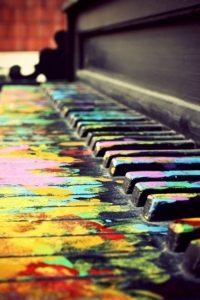More than 2 million youth in the United Sates are arrested every year, and approximately half are led through the juvenile justice system. While youth court participation is still a problem, the Office of Juvenile Justice and Delinquency Prevention reported a decline in juvenile arrests since 2008 (Shippen, Patterson,Green, 2012). Due to this occurrence, there has been an opportunity to keep the arrest rate declining via professional development for community and school stakeholders (Shippen, Patterson,Green, 2012). By the implementation of preventative methods for youth and ensuring that professionals are prepared to include evidence-based academic and behavioral methods, it will be a way to exercise preventative strategies before youth have exposure to the courts (Shippen, Patterson,Green, 2012).
Problem: The youth arrest rate problem is significant in Miami Dade county. There is currently a lack of effective prevention programs for at-risk youth in underserved communities in Miami-Dade County, FL. According to the Florida Department of Juvenile Justice, for the 2016 – 2017 year, there were 993 youth misdemeanor arrests in Miami Dade county.
What can be done to decrease these numbers? Providing youth with somewhere to go afterschool with the opportunity to engage in something which encourages confidence building, self-expression, safety, a place of mental peace, and even professional development. What does that place look like? An afterschool art program. Serving youth ages 13-17 who are at-risk for falling into the school to prison pipeline.
What the review of literature says: According to the afterschool Alliance 2009, over 15 million school-aged children do not have supervision during the hours after school. Due to this, unsupervised time is linked to negative results such as academic and emotional issues, delinquency, and the use of drugs. After school programs have the ability to serve as a safe place for youth, instead of being on the streets and at risk of juvenile delinquency, drug use, pregnancy, school dropout and victimization. Afterschool programs enable youth a place for the creation of social relationships with supportive adults (Hall, Williams & Daniel, 2010). Additionally, the Afterschool Alliance 2009 stated that youth involvement in afterschool programs is linked to increased test scores, school behavior, attendance, and graduation rates. Afterschool programs also have the ability to lower the chances of youth remaining in poverty, increase youth’s emotional intelligence, and lower the chances of youth’s immersion with the juvenile justice system (Hall, Williams & Daniel, 2010).
Numerous studies have found positive links between student behavior and participation in the arts. Art involvement fosters students to stay in school (Afterschool Alliance, 2012). A study on students in a middle school in Pittsburg who participated in the arts, indicated a lower level of suspensions and a higher level of school attendance (Afterschool Alliance, 2012). The arts have also been found to increase creativity, engagement, cognitive ability, and academic gains. Afterschool programs allow youth to have access to the arts who many not otherwise have the opportunity or the resources (Afterschool Alliance, 2012).
http://www.djj.state.fl.us/research/reports/reports-and-data/interactive-data-reports/delinquency-profile/delinquency-profile-dashboard
Shippen, M., Patterson, D., Green, K. (2012). Community and School Practices to Reduce Delinquent Behavior. Intervening on the School-to-Prison Pipeline. Retrieved from http://lynn-lang.student.lynn.edu:2055/doi/full/10.1177/0888406412445930
Hall, K.W., Williams, L.M., Daniel,L.G. (2010). An Afterschool Program for Economically Disadvantaged Youth: Perceptions of Parents, Staff and Students. Research in the Schools, Vol 17. 12-28. Retrieved from https://lynn-lang.student.lynn.edu:2379/education/docview/808527948/88BD57C72F1C4F7CPQ/14?accountid=36334
https://files.eric.ed.gov/fulltext/ED539785.pdf

